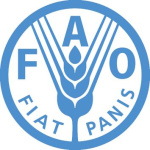- Industry: Agriculture
- Number of terms: 87409
- Number of blossaries: 0
- Company Profile:
Established in October 1945 with the objective of eliminating hunger and improving nutrition and standards of living by increasing agricultural productivity, FAO coordinates the efforts of governments and technical agencies in programs for developing agriculture, forestry, fisheries, and land and ...
The long chain of molecules in most cells that carries the genetic message and controls all cellular functions in most forms of life. The information-carrying genetic material that comprises the genes. DNA is a macro-molecule composed of a long chain of deoxyribonucleotides joined by phospho-diester linkages. Each deoxyribonucleotide contains a phosphate group, the five-carbon sugar 2-deoxribose, and a nitrogen-containing base. The genetic material of most organisms and organelles so far examined is double-stranded DNA; a number of viral genomes consist of single-stranded DNA or single-or double-stranded RNA. In double-stranded DNA, the two strands run in opposite (anti-parallel) directions and are coiled round one another in a double helix. Purine bases on one strand specifically hydrogen bond with pyrimidine bases on the other strand, according to the Watson-Crick rules (A pairs with T; G pairs with C). Hence a constant width for the double helix of 20 Å (2.0 nm) is maintained. In the B-form, DNA adopts a right-handed helical conformation, with each chain making a complete turn every 34 Å (3.4 nm), or once every ten bases.
Industry:Biotechnology
The long chain of molecules in most cells that carries the genetic message and controls all cellular functions in most forms of life. The information-carrying genetic material that comprises the genes. DNA is a macro-molecule composed of a long chain of deoxyribonucleotides joined by phospho-diester linkages. Each deoxyribonucleotide contains a phosphate group, the five-carbon sugar 2-deoxribose, and a nitrogen-containing base. The genetic material of most organisms and organelles so far examined is double-stranded DNA; a number of viral genomes consist of single-stranded DNA or single-or double-stranded RNA. In double-stranded DNA, the two strands run in opposite (anti-parallel) directions and are coiled round one another in a double helix. Purine bases on one strand specifically hydrogen bond with pyrimidine bases on the other strand, according to the Watson-Crick rules (A pairs with T; G pairs with C). Hence a constant width for the double helix of 20 Å (2.0 nm) is maintained. In the B-form, DNA adopts a right-handed helical conformation, with each chain making a complete turn every 34 Å (3.4 nm), or once every ten bases.
Industry:Biotechnology
In genetische manipulatie experimenten is het vaak nodig om te transformeren met een plasmide waarvoor er geen selecteerbare fenotype is en vervolgens scherm voor de aanwezigheid van dat plasmide binnen de gastheercel. Co-transformation is een techniek die in welke host cellen worden geïncubeerd met twee soorten plasmide, waarvan er één kan worden geselecteerd en de andere niet. Cellen die zijn getransformeerd met de eerste plasmide zijn vervolgens geselecteerd. Als transformatie heeft plaatsgevonden in hoge concentraties van DNA, dan is het waarschijnlijk dat deze cellen ook met de tweede (niet-selecteerbaar) plasmide zal zijn omgezet. De techniek wordt vaak gebruikt in experimenten met zoogdiercellen.
Industry:Biotechnology
In genetische studies, de paring van twee individuen of bevolkingsgroepen. Ook wel genoemd paring.
Industry:Biotechnology
In de genetica, meestal een individu dat een recessief mutant allel voor sommige defecte voorwaarde dat wordt heeft "gemaskeerd" door een dominante normale allel op de dezelfde locus, dat wil zeggen, een individu dat is heterozygoot voor een recessief schadelijke allel en een dominante normale allel; het fenotype is normaal, maar het individu het defect (recessief) allel wordt doorgegeven aan de helft van zijn nakomelingen.
Industry:Biotechnology
In de immunologie wordt produceren een van de vele oplosbare molecules die cellen tot controle reacties tussen andere cellen.
Industry:Biotechnology
In zoogdieren, het proces van het ontsnappen van de eicel (eicel) uit de eierstok.
Industry:Biotechnology
In orchideeën bevatten zaden een ongeorganiseerde embryo bestaande uit slechts een paar honderd cellen. Tijdens zaad kiemkracht deze embryo een Tubereuze structuur vormt, die wordt genoemd een protocorm, waaruit een volledige plant ontwikkelt. In culturen, vegetatieve delen van verschillende orchideeën formulier ronde, gladde protocorms die kunnen worden vermenigvuldigd voor onbepaalde tijd of geïnduceerde te genereren een hele plant.
Industry:Biotechnology
Een vroege, gekweekt vorm van een soort van gewas, geëvolueerd van een wild bevolking.
Industry:Biotechnology
New individual organisms that result from the process of sexual or asexual reproduction.
Industry:Biotechnology
